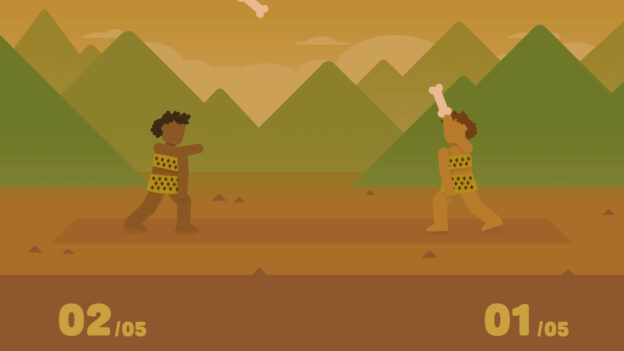Sea of Stars Review – Review

An unforgettable experience that blends the best of the past and present.
Many, many video games attempt to recreate the feeling and experiences offered by classic titles. Sabotage, makers of action-platformer The Messenger, decided to try their hand at a turn-based RPG, and the end result is nothing short of greatness. With clear inspiration from beloved games like Chrono Trigger and Super Mario RPG, Sea of Stars more than lives up to its forebearers; in a number of ways, it surpasses them.
The story of Sea of Stars revolves around fledgling Solstice Warriors Valere and Zale. As the game begins, the pair are just completing their initiation, and this serves as a tutorial for the primary combat mechanics. As the plot moves along, exploration mechanics are added that allow you to solve sliding block puzzles and hook-shot across gaps. Not to be outdone, combat evolves, too, with ways to add elemental energy to attacks and even dole out heaps of damage through individual ultimate abilities. Whenever the story or gameplay might be approaching anything resembling monotony, a new twist serves to keep the experience fresh on multiple levels.
Combat ends up being one of the most compelling aspects of Sea of Stars. It takes the familiar turn-based approach and adds timed attacks, defences, and abilities. You can swap turns between active party members and even those in reserve, which makes it easier to prevent enemies from casting their own spells. When your foes are channeling an ability, a lockset appears above their head, and successfully nullifying each lock negates the spell/ability, which essentially means that opponent doesn’t get to take a turn. A countdown always appears above every enemy’s head, so you know when they’re going to do a basic attack or when they’re prepping a special move.

To give an example, if you’re fighting a zombie that has a number “2” above its head in addition to four sword icon locks, you’ll have two turns to hit the zombie with four slashing attacks to stop them from performing a special move, in this case a life draining bite attack. You can use Zale’s basic attack to take out a single sword lock, and you’ll remove two locks if you successfully press the action button in time to deliver a second blow (and deal more damage). You can then switch out Valere on your next turn–with the zombie’s countdown now at “1”–to put in Seraï and use her dagger swiping attack to take out the final two locks. Accomplishing all of this allows you to whittle down the zombie’s life while keeping your team healthy.
Battles involve an engaging balance between using basic attacks and special moves that consume magic points (MP). Every time you do a regular attack, you restore 3 MP, so it’s worth expending MP at the beginning of a fight and then building it back up on subsequent turns. A handful of hours in, your basic attacks start to generate little orbs of energy that can be sucked up by any of your party members to imbue their next attack with elemental power. This leads to even more strategy as you may want to leave behind these orbs for future turns and the random locksets your foes will have while channeling their own stronger abilities.

Shifting over to the minute-to-minute exploration, moving around the individual towns, dungeons, caves, swamps, and jungles is a treat both visually and mechanically. You’ll need to climb up vines, leap across platforms, and jump and pull yourself up to higher ground throughout your travels, and this gives Sea of Stars a more dynamic and energetic feel. Rather than just running back and forth across flat surfaces, the movement in the game creates a sense of verticality and fullness to the different physical spaces you encounter. There’s no mechanical challenge to it, but like a game of I Spy, you have to peruse your surroundings carefully to spot a crevice, crack, or cliff that will lead you to the next area. And when you need a break from all of the fighting and the wayfinding, you can stop at one of many fishing spots and see what’s biting.
While the overarching plot involves Valere and Zale’s quest to destroy the monsters created by The Fleshmancer–and then ultimately take on that villain himself-the smaller stories that come from the places and people you meet along the way are just as captivating. Given the world-ending destruction caused by The Fleshmancer and his minions, there’s no lack of gravity and tension in pursuing him, but moments like the hero pair losing their Headmaster, the citizens of a town coming together to rebuild, and the commandeering of a ghostly pirate ship fill Sea of Stars with heart and charm in equal measure.

However, nowhere is this beating heart more evident than in the words and deeds of childhood companion Garl, the self-proclaimed Warrior Cook. In many of their encounters with would-be-friends, oversized deities, and dastardly denizens, Garl is the one who speaks first; his forthrightness, courage, and kindness take center stage as much, if not more, than similar qualities in Valere and Zale. In fact, he very often does the talking for them, especially in the first half of the story. He’s also the chef of the group, taking ingredients found in every biome and environment to create health and stamina-restoring dishes when the group finds a campfire at which to rest. It’s impossible not to be captivated by Garl’s heroism and personality, and no one who plays Sea of Stars through to completion is likely to forget him any time soon.
It would be a real Sophie’s choice to argue for the music or visuals of Sea of Stars being better than the other. The entire soundtrack is magical, and it encapsulates the joy, struggle, triumph, and desperation of the party and their world at every moment. Fans of The Messenger will be delighted to hear remixed versions of some of its stellar tracks. And don’t forget that famed composer Yasanori Mitsuda lends his talent to the soundtrack as well. On the other side, you have an art style brimming with vibrant colors, lush vegetation, and impeccable lighting effects: all of these serve to create a world that truly feels alive and lived in. In the same way that Chrono Trigger brought us to so many different places with their own unique identity, Sea of Stars pulls off the same trick with a modern flair. The overall aesthetic is one that elicits both nostalgia and familiarity, but also feels modern and fresh.

There are a host of in-game options are available to make the game easier, if you prefer, but I found the adventure to be fairly light and breezy in terms of difficulty. End game content steps up the challenge and offers players extra goals to work towards, ones that will force you to scour the world for clues, secrets, and treasure. It’s nice to see that you can purchase relics that adjust the combat, in particular, to suit your playstyle. Ultimately, it’s clear that the developers wanted players of all skill and experience levels to be able to enjoy their game.
There’s a lot about Sea of Stars that I want to shout from the rooftops about. Were I to do that here, though, I’d be robbing you of the joy of discovering an RPG experience for the ages. I’ve come across a miniscule number of video games I have the urge to immediately replay after finishing, and almost none that take 20-30 hours to roll credits on. Sea of Stars, though, is a near flawless take on the turn-based RPG. At times it wears its SNES inspirations on its sleeves (and proudly), but it evolves the combat to a level of perfection. Every aspect of the game is fun, or emotional, or tantalizingly brain-teasing, and I haven’t been able to put it down even after rolling credits a dozen hours of playtime earlier. You’ll smile, laugh, and maybe even cry as you help Valere and Zale complete their mission, but there’s one thing for certain: you’ll never forget it.




